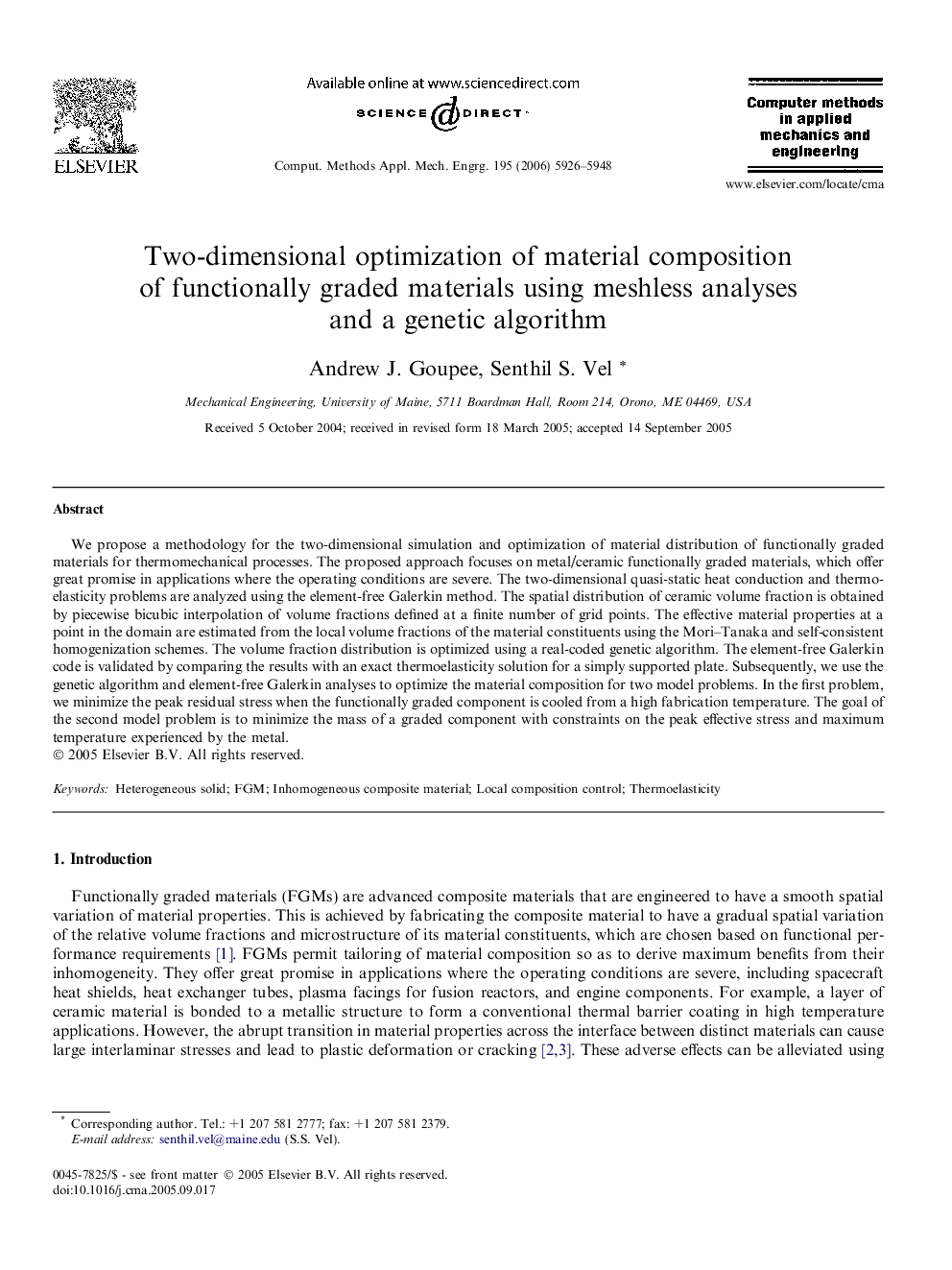| کد مقاله | کد نشریه | سال انتشار | مقاله انگلیسی | نسخه تمام متن |
|---|---|---|---|---|
| 499846 | 863063 | 2006 | 23 صفحه PDF | دانلود رایگان |

We propose a methodology for the two-dimensional simulation and optimization of material distribution of functionally graded materials for thermomechanical processes. The proposed approach focuses on metal/ceramic functionally graded materials, which offer great promise in applications where the operating conditions are severe. The two-dimensional quasi-static heat conduction and thermoelasticity problems are analyzed using the element-free Galerkin method. The spatial distribution of ceramic volume fraction is obtained by piecewise bicubic interpolation of volume fractions defined at a finite number of grid points. The effective material properties at a point in the domain are estimated from the local volume fractions of the material constituents using the Mori–Tanaka and self-consistent homogenization schemes. The volume fraction distribution is optimized using a real-coded genetic algorithm. The element-free Galerkin code is validated by comparing the results with an exact thermoelasticity solution for a simply supported plate. Subsequently, we use the genetic algorithm and element-free Galerkin analyses to optimize the material composition for two model problems. In the first problem, we minimize the peak residual stress when the functionally graded component is cooled from a high fabrication temperature. The goal of the second model problem is to minimize the mass of a graded component with constraints on the peak effective stress and maximum temperature experienced by the metal.
Journal: Computer Methods in Applied Mechanics and Engineering - Volume 195, Issues 44–47, 15 September 2006, Pages 5926–5948